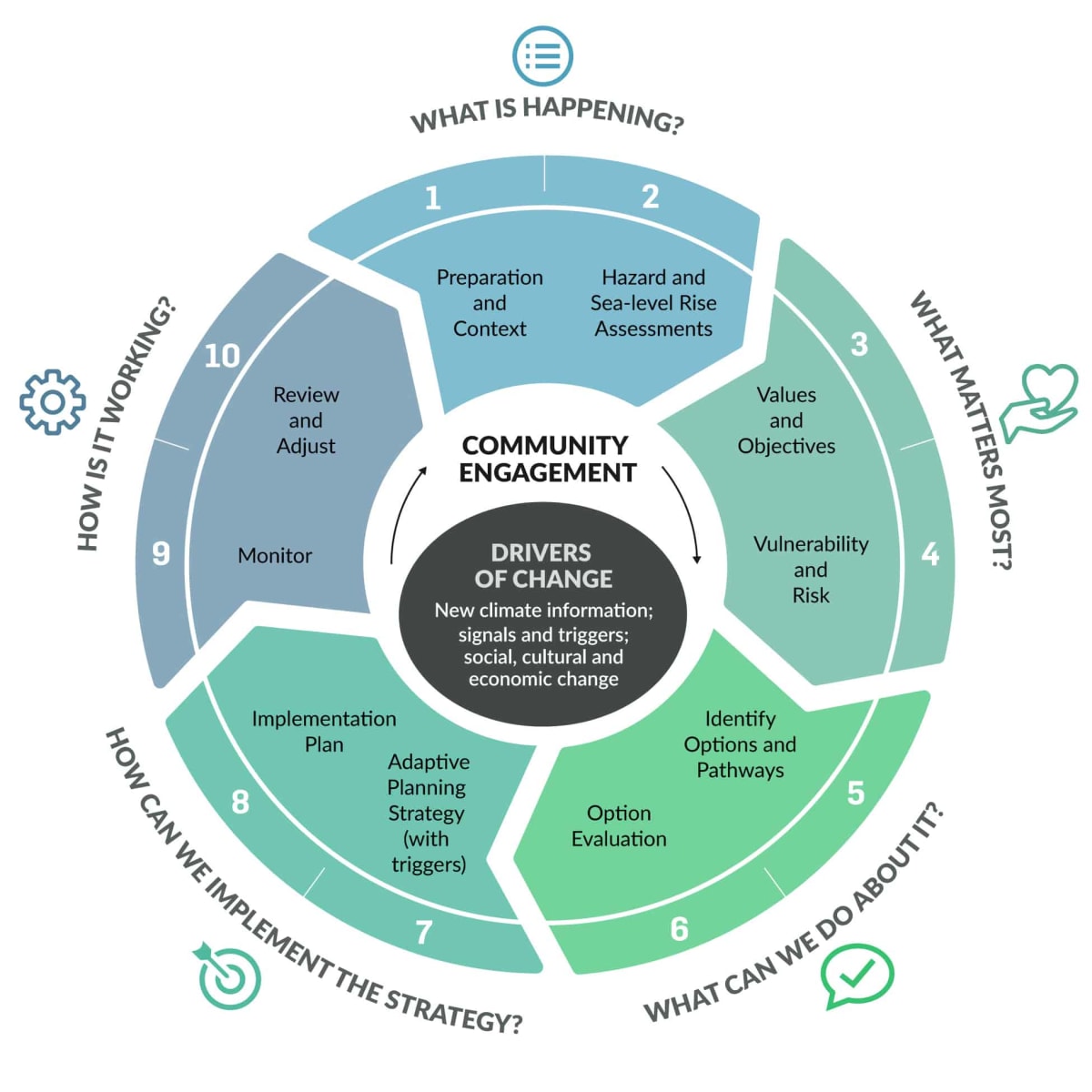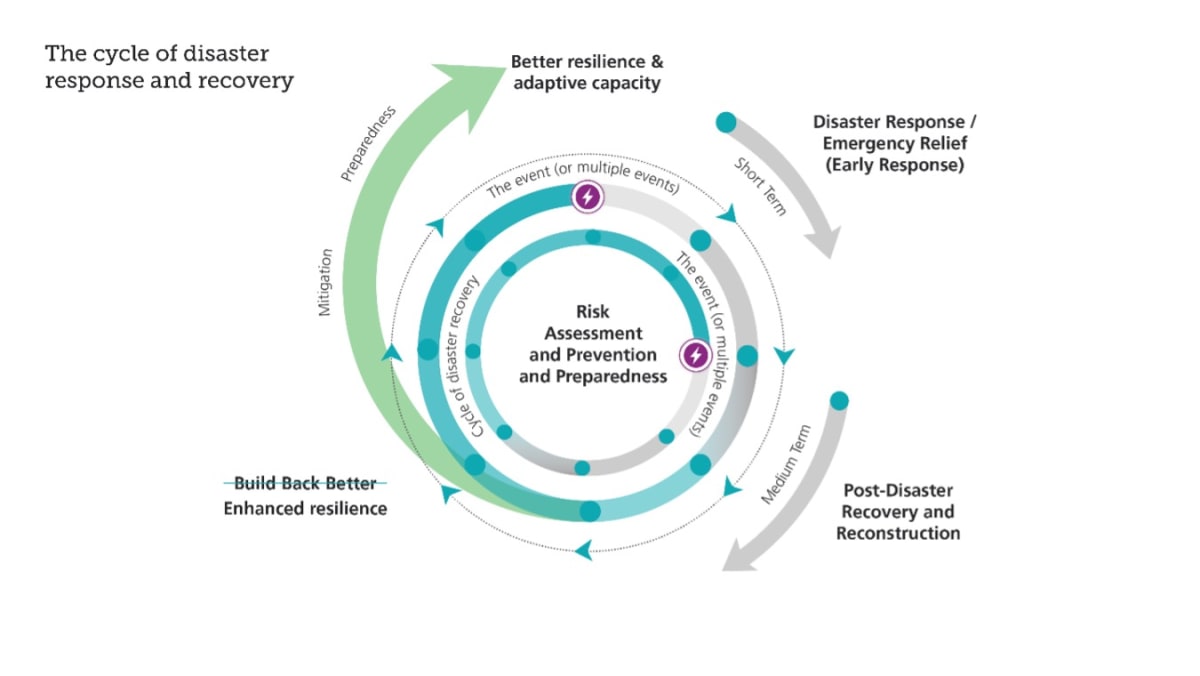
Taking a proactive, holistic and long-term approach to disaster risk reduction can help to ensure our communities are as resilient and prepared as possible for the climate challenges ahead, writes Cushla Loomb | Content partnership
Climate change is having a profound impact on our planet. More frequent and severe natural hazard events, like cyclones, floods, wildfires, heatwaves and drought, are affecting people and communities, requiring their elected officials to make serious decisions about the “deeply uncertain” future.
As we saw over the course of the Auckland Anniversary floods and Cyclone Gabrielle, climate change risk has become all too real and tangible for many in Aotearoa New Zealand. In Auckland in January that risk manifested as intense rainfall, which overwhelmed the city’s infrastructure to cause severe flooding across much of the city. Cyclone Gabrielle soon followed, further increasing damage in parts of Auckland, and devastating Hawkes Bay and Tairāwhiti, leaving large parts uninhabitable and inaccessible.
At its core, the problem is that as our climate changes the frequency and severity of these type of events is increasing. What was once considered a 1 in 100-year flood risk is becoming more like a 1 in 50-year, or even a 1 in 10-year event. In effect, this means an increase from a one percent chance of a severe weather event in a given year, to a two percent or even 10 percent chance. Infrastructure that historically provided acceptable levels of protection may soon be inadequate.
We know that the climate is changing and that our communities and infrastructure will be impacted; however, uncertainty remains. “Deep uncertainty” arises when decision makers have incomplete knowledge of a situation – this could be an incomplete data set (eg there are 100 homes in a floodplain, but how many of those are already elevated above the flood level?), uncertain projections (eg will 500mm of sea level rise occur by 2070 or 2090, or when will the next ‘Cyclone Gabrielle’ occur?), or uncertainty regarding the interconnectivity of the system and resulting impacts (eg if this road is blocked, how are the supply chains or communities affected?).
As a result, our engineering, planning and urban design approaches need to change, to incorporate much higher levels of resilience. This can mean bigger, more expensive infrastructure that will be both more resilient but also more costly – in capital and carbon – to build and maintain. The question is, is bigger really better?
Resilient decision making
As we respond to acute events and disasters, and also slower but no less impactful climate change effects like sea level rise, we need to consider whether the decisions we are making are truly providing us with long-term climate adaptation and resilience. Importantly, these “natural” disasters are human ones. The rainfall in Auckland on Anniversary Weekend was only a problem because of how it impacted our infrastructure and how development has prevented the natural system from absorbing the “shocks” of these storm events.
Once the disaster has already occurred, we are presented with an opportunity to enhance resiliency by not simply rebuilding as it was before, but making improvements based on the outcomes we are seeking to achieve.
We need to be careful that in our haste to respond to a disaster, we are not causing maladaptation. For example large stopbanks may actually have the unintended consequence of promoting more development behind them, resulting in more homes and infrastructure being placed at risk in the future. Maladaptation is one of the top risks identified in New Zealand’s National Climate Risk Assessment.
It is clear that we can no longer afford to be reactive to large-scale events. Instead, we need to have worked with communities to understand what matters most, to share information about what is happening, and to discuss what we can do about it with our communities so that when disaster strikes, we are agreed on the pathway to enhanced resilience, with target long-term outcomes in mind.
Being prepared will enable us and our communities to make decisions in the face of many uncertainties, in a way that is transparent and inclusive.
What we and our communities need, is a decision-making process that is flexible and can adapt to a changing environment but still provide for the essentials of inclusion and transparency.
Dynamic adaptive pathways planning
Dynamic adaptive pathways planning (DAPP), first introduced in the Netherlands to deal with severe inundation events, is just such a way to provide the certainty our communities need.
DAPP is an assessment framework that provides a flexible approach to adaptation, and can be applied to any situation where there is a degree of uncertainty. It uses 'signals' and 'triggers' to identify when a change in pathway is needed before a certain 'threshold' or unacceptable impact is reached.
With consistent and accurate monitoring at its core, DAPP provides a flexible approach that can be adjusted as conditions change over time. It is recommended by the IPCC and by the Ministry for the Environment and is used a lot in the context of climate change and disaster response.

DAPP provides a roadmap to respond to ongoing incremental effects of climate change by monitoring and taking action when trigger points are reached. However, as we have seen recently in the storms in New Zealand, large scale events can mean that we exceed all the signals, triggers and thresholds at once. There is work underway by an expert panel commissioned by the Ministry for the Environment developing guidance on the use of DAPP, including for how it can be used for disasters such as the Auckland Anniversary and Cyclone Gabrielle floods. The guidance is due out at the end of 2023. Ministry for the Environment has also recently released an Issues and Options paper on community-led retreat and adaptation funding that discusses how we may adapt through recovery.
Applying DAPP enables communities to develop agreed pathways prior to an event, potentially resulting in a quicker response. It also provides a clear vision and can incorporate objectives developed with the community, including an agreed level of risk tolerance. This means that as we move out of the emergency management phase of disaster response, we can rapidly move into agreed pathways that were developed with long-term outcomes in mind, enhancing adaptation and resilience over the longer term.
With open dialogue and engagement, the process is transparent and provides a robust framework. DAPP looks at risk management challenges holistically, with social, environmental, cultural and economic outcomes in mind through to the long-term. Ongoing monitoring and review allows new information to be incorporated as it becomes available, and adjustments to be made along agreed pathways. With such transparency, relief funds may also be able to be accessed more easily.
Looking beyond the status quo
There are many factors to consider when making decisions on long-term recovery from disaster, including the cost of rebuilding, the potential for future events, the availability of resources, and the needs and priorities of affected communities.
As we apply a long-term view to our decision making, we also need to make sure we are not locking ourselves in for future costs, be they societal, environmental or economic. We need to understand as well, that ‘communities’ themselves are not static – so what is good for the current community may not be appropriate for the ‘future’ community as it evolves, whatever form that takes over time.
Recovery in many ways implies a ‘getting back to the status quo’ but we need to challenge ourselves to consider whether the status quo is suitable for changing climate impacts, and if it truly promotes and supports greater resilience for our communities and infrastructure.
In some cases, it may make sense to build back better, incorporating features like green infrastructure, flood-resistant design, and renewable energy systems that can help to reduce the risk of future disasters and mitigate the impacts of climate change. However, in other cases it may be more appropriate to consider not rebuilding at all.

This could be due to factors like the cost of reconstruction, the level of risk posed by future disasters, or the need to relocate communities to safer areas. While this can be an incredibly hard decision to make, it is essential that all options are considered against long-term outcomes sought and that the safety and wellbeing of communities is prioritised.
Conclusion
Ultimately, the need for forward planning to deal with climate-driven natural hazards cannot be overstated. Events like Cyclone Gabrielle will happen more frequently under climate change projections. The only thing certain about our future, is that we can't be certain.
Long-term resilience requires us to think differently regarding how we 'build back’. We need to determine what level of risk is acceptable – which will vary for different regions and communities, and we need to keep long-term outcomes in mind even when making immediate and short-term recovery decisions. There are things that we can be doing now to prepare communities for these future events and post-event responses.
Having a dynamic and adaptive strategy that incorporates pathways in the event of a disaster is key to quick recovery and moving our communities towards greater future resilience. Decisions need to be informed by good information, but we also need to be comfortable that we may not always have perfect data.
By taking a proactive, holistic and long-term approach to disaster risk reduction, we can help to ensure that our communities and infrastructure are as resilient and prepared as possible for the challenges ahead.
Beca is a partner of Newsroom







